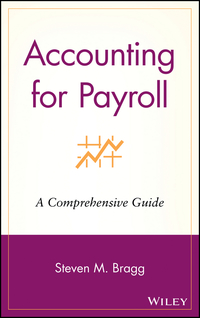Answered step by step
Verified Expert Solution
Question
1 Approved Answer
The way in which a company accounts for its investments is determined by the nature and purpose of the investment. For each of the following
The way in which a company accounts for its investments is determined by the nature and purpose of the investment. For each of the following investment situations, indicate if the investment
| (a) | would be considered a debt or equity investment, | |
| (b) | is a strategic or non-strategic investment, | |
| (c) | should be classified as a current or a non-current asset, and | |
| (d) | should be reported at cost, amortized cost, fair value, or equity. |
| (a) | (b) | (c) | (d) | |||||||
| 1. | A public company reporting under IFRS purchases 25% of the common shares of one of its suppliers to ensure a reliable source of raw materials. The ownership percentage provides significant influence. | Debt InvestmentEquity Investment | Non-strategic InvestmentStrategic Investment | Current AssetNon-current Asset | CostFair ValueEquityAmortized Cost | |||||
| 2. | A private company reporting under ASPE purchases 25% of the common shares of one of its suppliers to ensure a reliable source of raw materials. They paid $2 above the market price. The ownership percentage does not provide significant influence but the common shares of the supplier are traded on the stock market. | Equity InvestmentDebt Investment | Non-strategic InvestmentStrategic Investment | Current AssetNon-current Asset | Fair ValueAmortized CostEquityCost | |||||
| 3. | A company reporting under IFRS purchased 10-year bonds to earn interest income. | Debt InvestmentEquity Investment | Non-strategic InvestmentStrategic Investment | Non-current AssetCurrent Asset | EquityFair ValueAmortized CostCost | |||||
| 4. | A public company reporting under IFRS purchased common shares from another company, with plans to sell them if the share price increases. | Debt InvestmentEquity Investment | Strategic InvestmentNon-strategic Investment | Current AssetNon-current Asset | CostAmortized CostEquityFair Value | |||||
| 5. | A private company reporting under ASPE purchased shares for trading. | Debt InvestmentEquity Investment | Strategic InvestmentNon-strategic Investment | Non-current AssetCurrent Asset | Amortized CostEquityCostFair Value | |||||
| 6. | A private company reporting under ASPE purchased government treasury bills. | Equity InvestmentDebt Investment | Non-strategic InvestmentStrategic Investment | Non-current AssetCurrent Asset | CostEquityAmortized CostFair Value | |||||
| 7. | A private company reporting under ASPE purchased 15% of the common shares of a company "to hold" for which there is no quoted market price. | Equity InvestmentDebt Investment | Non-strategic InvestmentStrategic Investment | Non-current AssetCurrent Asset | Amortized CostCostEquityFair Value |
Step by Step Solution
There are 3 Steps involved in it
Step: 1

Get Instant Access to Expert-Tailored Solutions
See step-by-step solutions with expert insights and AI powered tools for academic success
Step: 2

Step: 3

Ace Your Homework with AI
Get the answers you need in no time with our AI-driven, step-by-step assistance
Get Started


